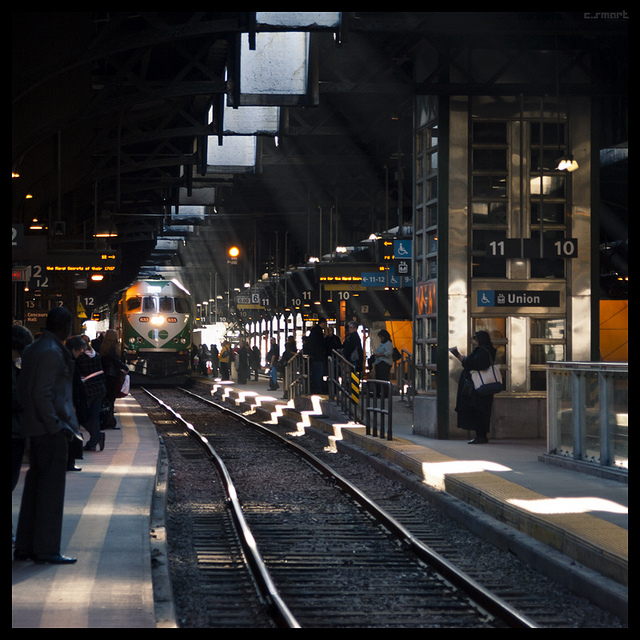For many of us, the bus or subway provides a critical link from home to work, school, and family and friends. Yes, transit makes enormous contributions to a city, reducing congestion by keeping cars off the road and helping to keep the air cleaner. But, taking a bus or train also benefits us personally, inserting short walks into our days for a healthier lifestyle, and connecting us socially to our drivers and fellow passengers. And every trip starts with one step in our own neighborhood.
For several years, transit rides have increased 1.4 percent annually. But despite an increase in use, transit management and service has not changed much at all. Across the country, our bus routes often look exactly as they did 60 years ago, even though our offices, homes, schools, shopping and destinations have grown in completely different directions. And our bus stops, often just a metal stick cemented in the sidewalk, provide no more shelter than they used to. Technology has made it easier for people to plan their trips based on schedules, but the majority of people across the country still grapple with the realities of long waits and delays. People who rely on transit the most — those with disabilities, seniors, and families on a tight budget — often bear the brunt of these service inadequacies. All these forces, in sum, reinforce the perception that transit is second best.
It doesn’t have to be this way. The experience of taking transit can be enlivening, an energizing highlight of the day. Instead of waiting for someone else to revolutionize our train and bus systems, we are interested in making change now. We think that riders — those of us who take transit every single day — who know our daily routes and how they fit in the entire system inside and out, have some pretty darn good ideas on improving the everyday experience of our trips. Some riders serenade their bus drivers, others bring picnics to share, some garden while they wait for the train, and others leave a book to borrow a book before hopping on their ride home.
Okay, I get it. Transit could be better. But what am I supposed to do about it? I’m just one rider. Shouldn’t the transit authority be the one to make these changes?

Photo credit: sigma. / Foter / CC BY-NC-ND.
Small-scale projects are no substitute for service improvements, which would make transit better for all. Of course, our elected officials should be funding the large-scale improvements our systems need. But we can make substantial — if incremental — changes to make our trips more convenient, comfortable, and fun. And small actions show that transit doesn’t have to be a daily grind. Each transit trip we take has value, and the ways we trick out our trips show transit agencies, and the rest of the community, that there are constituents who care and are invested in frequent, efficient, reliable, predictable transit. For us riders, transit has never been a second choice; it’s the path from our own doorstep to the rest of the city.
Once a week for the next five weeks, Shareable will feature one how-to from ioby's Trick Out My Trip report. Below are the how-tos in the series, all stuff that "any community can do to improve their transit experience in five easy steps."









